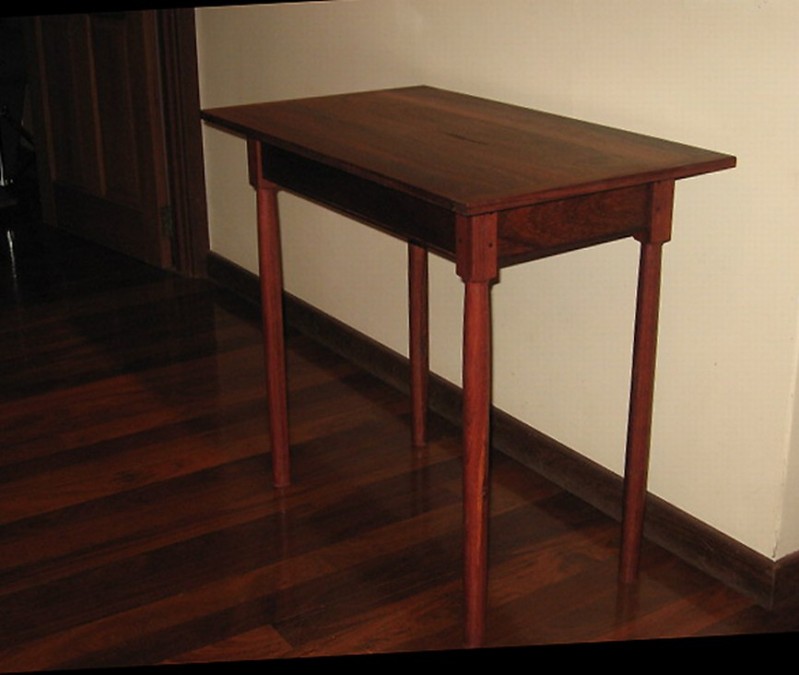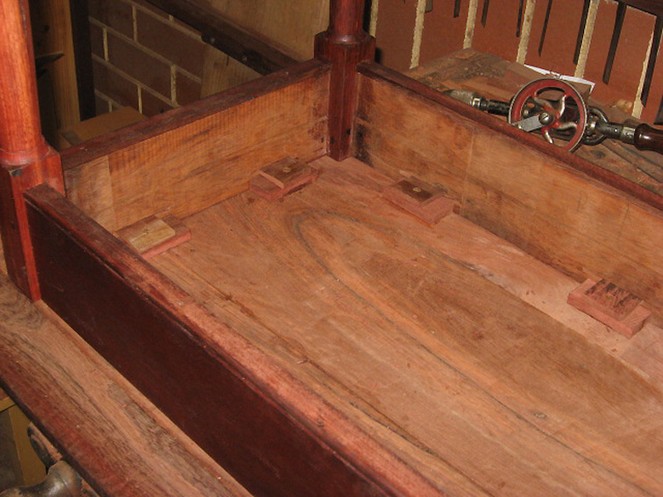MrDavidRoberts
Established Member
- Joined
- 23 Dec 2016
- Messages
- 388
- Reaction score
- 2
Hello, I'm planing to make a few items which require a worktop (sideboard and a table) ,however I do not have a P/T ( I used to have but I don't have anywhere where to put one now + want to keep the noise down due to neighbors)
I have a No4 old Record marples plane which I bought on ebay few years ago, but I would be open to idea of buying a larger no 6-7 jointer plane as well as I understand it's necessary if you want to properly do larger pieces.
I will be making the tops from rather good quality Pine CLS
Being CLS it comes with eased-up edges which I just ran through a P/T in past to get everything nice and square , but now I'm a bit stuck since I do not have a P/T and need a way to remove some stock off so its with square edges and the boards can be joined/glued together to form a top.
So my questions are:
1-What kind of size plane I would need (would be the best) If I wanted to square up and finish off for example a board that is 20cm wide and 150cm long?
2- With a proper sharp plane how long do you think such task would take if the board would have minimal cupping/twisting (but still always there is some..)? - I guess It takes me about 10-15minutes to square up 2sides with planer and than run it through a thicknesser the normal way.
3-In past after I fed it through a P/T I was left with a finish that needed a lot of sanding to remove all planer marks and other imperfections behind, do you think there would be less marks left if you were to do it with a razor sharp hand plane? I have heard that in some cases you don't even need sanding after planing with handplanes? It took me about 60-80 minutes to properly sand a small 40x100cm worktop in past and still I was left with some sanding marks and the finish wasn't really that perfect, that's A LOT of effort/dust and noise pollution.
4- Can you suggest an easy to learn/not expensive system on how to properly sharpen handplane blades? I have tried to sharpen mine in past with just some regular dry sandpaper as I didn't had anything else but the results weren't really good and I wasn't really sure what I'm doing, I want to try to learn how to sharpen one so it's properly razor sharp - I have seen some articles where they suggest some crazy expensive £50 stones and you need few of them..there's gotta be a cheaper way to do that but without involving sandpaper? I have seen some cheap £10 honing guides/stone kits they sell but from the reviews those doesn't seem very good?
6- What make/model plane/s would you suggest to do such task? I have a budget of maybe £50-£70 (used) to get a larger jointer plane, however I'm not sure what's the best stuff you could get for such budget? Under no circumstances I want to buy cheap and buy twice, I want good quality stuff that would last a lifetime and be a pleasure to use - However my budget probably doesn't stretches to get something like lie nielsen planes as they cost like £400 new and I'm not sure what's the used market for them.
7- Let's be realistic , Is it possible to get rid of an super noisy P/T along with even noisier chip collector which takes up HUGE amounts of space in total and go do it the old-school way with just a handplane and get good results in reasonable time? There's gotta be an easier way than keeping a large/noisy/expensive Planer thickneser & chip extractor combo to use it only for maybe 1hour a month.
That's a lot of questions... If someone would have the time to chime in that would be really helpful for a total beginner in hand-planes like myself.
Thanks in advance.
I have a No4 old Record marples plane which I bought on ebay few years ago, but I would be open to idea of buying a larger no 6-7 jointer plane as well as I understand it's necessary if you want to properly do larger pieces.
I will be making the tops from rather good quality Pine CLS
Being CLS it comes with eased-up edges which I just ran through a P/T in past to get everything nice and square , but now I'm a bit stuck since I do not have a P/T and need a way to remove some stock off so its with square edges and the boards can be joined/glued together to form a top.
So my questions are:
1-What kind of size plane I would need (would be the best) If I wanted to square up and finish off for example a board that is 20cm wide and 150cm long?
2- With a proper sharp plane how long do you think such task would take if the board would have minimal cupping/twisting (but still always there is some..)? - I guess It takes me about 10-15minutes to square up 2sides with planer and than run it through a thicknesser the normal way.
3-In past after I fed it through a P/T I was left with a finish that needed a lot of sanding to remove all planer marks and other imperfections behind, do you think there would be less marks left if you were to do it with a razor sharp hand plane? I have heard that in some cases you don't even need sanding after planing with handplanes? It took me about 60-80 minutes to properly sand a small 40x100cm worktop in past and still I was left with some sanding marks and the finish wasn't really that perfect, that's A LOT of effort/dust and noise pollution.
4- Can you suggest an easy to learn/not expensive system on how to properly sharpen handplane blades? I have tried to sharpen mine in past with just some regular dry sandpaper as I didn't had anything else but the results weren't really good and I wasn't really sure what I'm doing, I want to try to learn how to sharpen one so it's properly razor sharp - I have seen some articles where they suggest some crazy expensive £50 stones and you need few of them..there's gotta be a cheaper way to do that but without involving sandpaper? I have seen some cheap £10 honing guides/stone kits they sell but from the reviews those doesn't seem very good?
6- What make/model plane/s would you suggest to do such task? I have a budget of maybe £50-£70 (used) to get a larger jointer plane, however I'm not sure what's the best stuff you could get for such budget? Under no circumstances I want to buy cheap and buy twice, I want good quality stuff that would last a lifetime and be a pleasure to use - However my budget probably doesn't stretches to get something like lie nielsen planes as they cost like £400 new and I'm not sure what's the used market for them.
7- Let's be realistic , Is it possible to get rid of an super noisy P/T along with even noisier chip collector which takes up HUGE amounts of space in total and go do it the old-school way with just a handplane and get good results in reasonable time? There's gotta be an easier way than keeping a large/noisy/expensive Planer thickneser & chip extractor combo to use it only for maybe 1hour a month.
That's a lot of questions... If someone would have the time to chime in that would be really helpful for a total beginner in hand-planes like myself.
Thanks in advance.



































